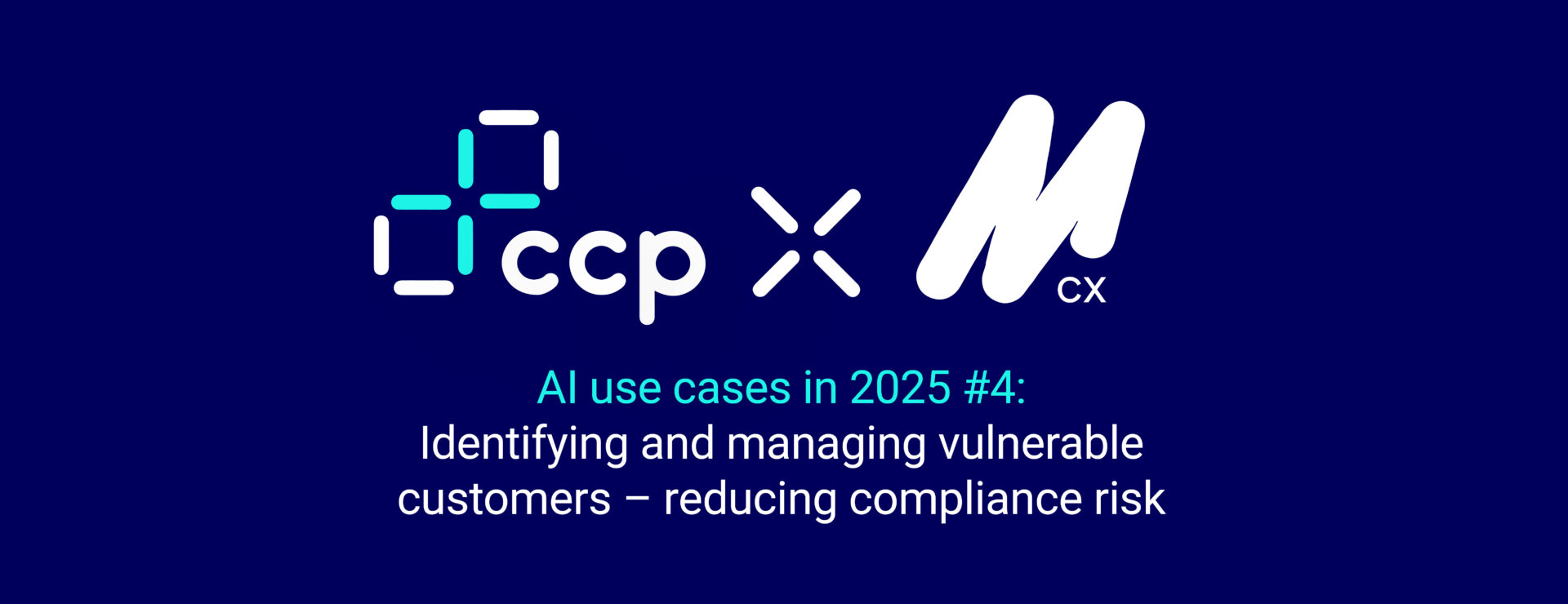
Identifying and supporting vulnerable customers – such as those experiencing financial difficulties, health issues, or emotional distress – is crucial for ethical, compliant and effective service delivery.
While the FCA has long taken a leading role in this space, other regulators such as Ofcom and Ofgem have also required vulnerability protections to be in place, with the UK’s Digital Markets, Competition and Consumers Act 2024 (DMCC), which came into effect on 6 April 2025, also widening the concept of vulnerable customers.
With thresholds higher than ever, the risks of not identifying vulnerable customers can be significant. Fines can now be imposed without a court order and at eye-watering levels, with reputational risk a compounding facto, not to mention the impact on vulnerable individuals themselves.
What’s more, with the divergence between UK and EU law, any cross-border businesses need to be even more on their toes in different jurisdictions.
What is the AI doing to detect vulnerability?
With the preceding three use cases essentially laying the groundwork for this kind of analysis and management, AI can identify signs of vulnerability by analysing speech patterns, language cues, and emotional indicators.
Key benefits: Categorisation and risk scoring
Vulnerability is a spectrum, and customers can move in and out of vulnerable states or between risk factors. Detecting this manually, however, is fraught with difficulty.
First, different people have different – and subjective – views on whether a customer may be indicating a vulnerability factor.
Second, the cues can be subtle and therefore challenging to pick up, especially when an agent – as a normal part of their job – is multi-tasking across multiple screens, taking notes and trying to hold a conversation at the same time.
But the AI is far less likely to miss those cues, because it isn’t distracted, isn’t having a bad or busy day, and doesn’t have empathy as an emotion. Any AI empathy is trained in data, and consequently consistently applied.
Record accuracy
As with use case 1, the use of AI enhances note taking and record-keeping by transcribing and summarising the call automatically. This avoids any temptation to rush the process, and risk non-compliance, while allowing the agent to focus solely on the customer’s needs.
Compliance alerts
While you could employ this kind of analysis in-flight, where prevention is almost always more desirable than cure, even a post-call analysis allows for flagging of potentially vulnerable customers and pro-active outbound or other management of that customer. retrospectively, and still gain some of the benefit, the nature of the regulatory and legal environment makes a real-time approach more desirable, with a prevention rather than cure approach.
Real-time vulnerability detection
The ultimate deployment of real-time detection during a call allows agents to adjust their approach on the fly. And for a true ‘belt and braces’ approach, if a risk score is exceeded, this can be flagged as a ‘red alert’ to the agent, very clearly instructing them not to sell, to do a welfare check, or provide relevant support information.
All of which not only manages the risk to individuals and the business, but empowers agents with the confidence to handle sensitive situations effectively and retains consumer trust through a commitment to their wellbeing that can also foster loyalty.
Implementation Considerations
Again, systems integration and data privacy are key factors in implementation, especially around matters of data usage and consent. As is training and embedding belief in the AI.
But where in other use cases it may be that the cost (or perceived cost) and complexity (or perceived complexity) of implementation of the AI project make the decision more difficult, in this instance, the potential of the AI is less about an ROI against cost than it is about ROI against the potential cost of those eye-watering fines if getting it wrong.
Measuring Success
Here, measurement may be a little trickier, depending upon how well you are able to understand the current baseline. Consider that manual QA is based on only 1-2% of calls, there could be whole swathes of risk going undetected.
The ideal situation is that there is nothing to measure. No issues, no incidents.
However, you can look at measures such as customer feedback from vulnerable customers, the numbers of interventions such as welfare or information provided, and adherence to regulations, particularly if using retrospectively rather than real time.
But the real benefits come from what doesn’t happen, rather than what does. In summary, they are:
- More frequent and consistent identification of customer vulnerability
- More accurate records
- More confidence in your compliance
- Less perceived risk within the business
Using AI to identify vulnerable customers enables contact centres not only to improve on consumer duty and meet the right ethical standards with empathetic and responsible service, it hugely decreases the risk of the worst possible outcome (from a business viability perspective) of an unexpected knock on the door from the regulator and/or widespread bad press.
To find out more about how CCP can help you make the right technology choices, read more here or get in touch.
This series of articles is drawn from our webinar with Jimmy Hosang, CEO and co-founder at Mojo CX. We explored seven key use cases for AI in contact centres, starting from the easiest productivity gains to value generating applications. You can find a summary of all seven use cases here, or watch the webinar in full here.




